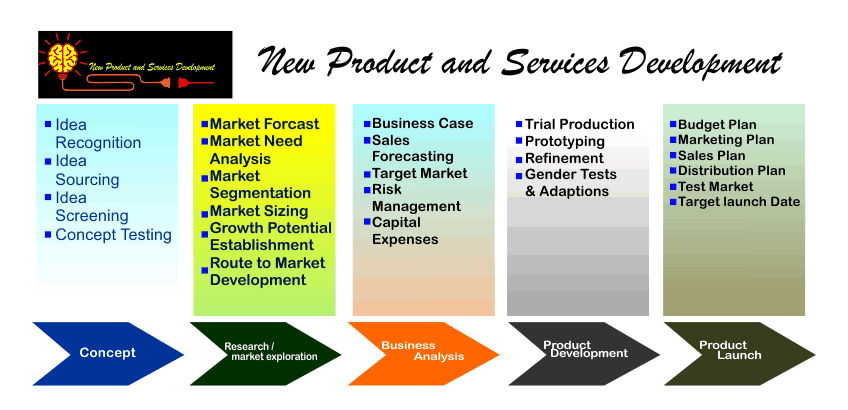
New Product and Service Development (NPSD) refers to the process of creating and launching new products, services, or features that meet customer needs and drive business growth. It involves a range of activities, from idea generation to launch and post-launch evaluation.
Key stages of NPSD:
1. Idea Generation: Identifying opportunities and generating ideas for new products or services. 2. Idea Screening: Evaluating and selecting the most promising ideas. 3. Concept Development: Developing and refining the concept. 4. Business Case Development: Creating a business case, including market analysis, financial projections, and risk assessment. 5. Product/Service Development: Designing, prototyping, and testing the product or service. 6. Test Marketing: Conducting market tests to validate the product or service. 7. Launch: Introducing the product or service to the market. 8. Post-Launch Evaluation: Monitoring and evaluating performance, making adjustments as needed.
Key aspects of NPSD:
- Customer involvement and feedback - Cross-functional teams (marketing, sales, R&D, etc.) - Agile and iterative development processes - Risk management and mitigation - Continuous learning and improvement
Benefits of NPSD:
- Drives business growth and revenue - Enhances competitiveness - Increases customer satisfaction and loyalty - Encourages innovation and entrepreneurship - Supports company's strategic objectives
Challenges of NPSD:
- Managing uncertainty and risk - Balancing innovation with operational efficiency - Ensuring customer adoption and acceptance - Coordinating cross-functional teams - Maintaining quality and consistency
By following a structured NPSD process, organizations can increase their chances of success and create products and services that meet customer needs and drive business growth.